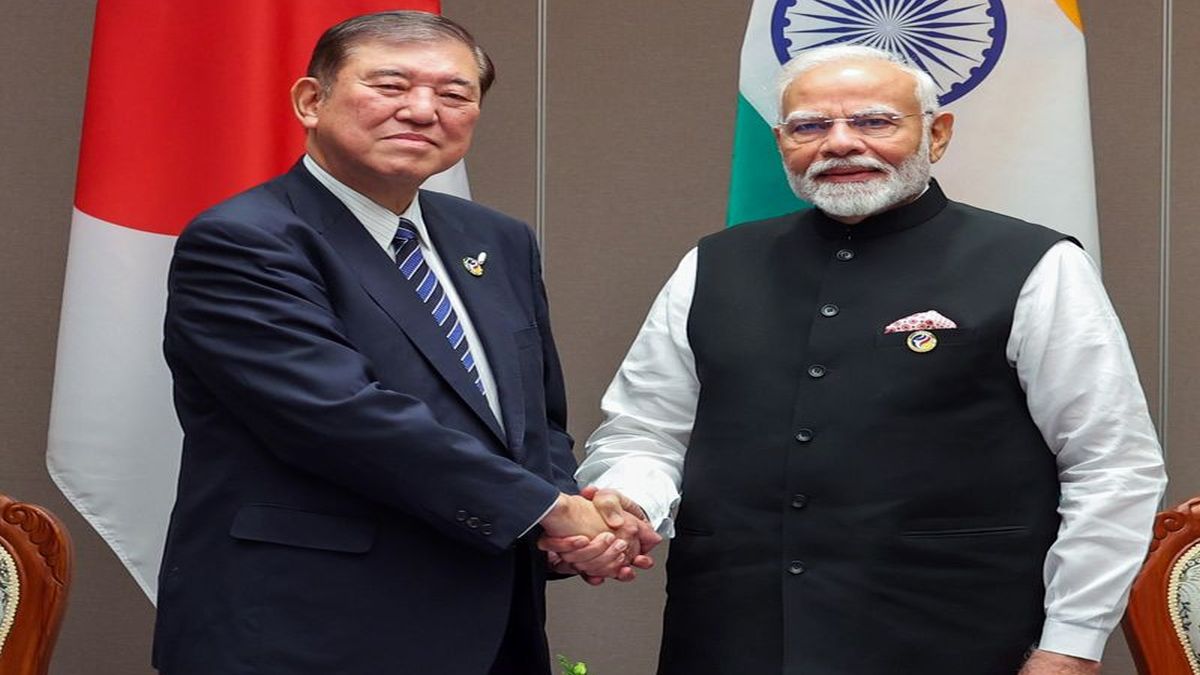Amid tariff tensions with the United States, Prime Minister Narendra Modi is making his way to Japan this evening (August 28) for a two-day visit. The PM is scheduled to arrive in Tokyo on August 29 where he will be attending the 15th India-Japan Annual Summit with his Japanese counterpart, Shigeru Ishiba.
“This will be PM Modi’s first annual summit with his Japanese counterpart, and is first standalone visit to Japan in nearly seven years. He last visited for the annual summit in 2018,” said Foreign Secretary Vikram Misri ahead of Modi’s two-day visit.
Notably, following his Japan visit, PM Modi will travel to China to attend the Shanghai Cooperation Organisation Summit in Tianjin at the invitation of Chinese President Xi Jinping.
As he prepares to embark on his voyage, we take a closer look at what makes this visit important? What’s on the cards?
Quad matters
PM Modi’s Japan visit will focus largely on the grouping of Quad — the collective of India, Japan, Australia and the United States. Misri, speaking to reporters about Modi’s trip said that the Quad grouping is an “important platform” on the agenda for talks between Prime Minister Narendra Modi and Japanese Prime Minister Shigeru Ishiba at the 15th India-Japan Annual Summit to be held in Tokyo.
FS Vikram Misri: #Quad is an important platform for working on and promoting peace, stability, prosperity and development in the Indo-Pacific.
…
I am sure that when two Prime Ministers(India-Japan) meet Quad will be discussed. pic.twitter.com/SusGXevxzv— Akash Sharma (@kaidensharmaa) August 26, 2025
“The Quad is indeed an important platform for working on and promoting peace, stability, prosperity, and development in the Indo-Pacific region,” Misri said, listing cooperation on health, critical and emerging technologies, resilient supply chains and infrastructure as priorities for the Australia-India-Japan-US grouping. “I’m sure when the two prime ministers meet, the Quad will be a subject that will be discussed between the two of them,” he said.
The discussions on Quad assume significance as relations within the grouping have been strained as a result of Trump’s decision to impose a whopping 50 per cent tariffs on India.
Boosting defence ties
In addition to discussing the importance of Quad, PM Modi is also looking at deepening India and Japan’s defence cooperation. As Vikram Misri said in his press conference, “Defence ties with Japan have emerged as an important pillar of cooperation between the two countries in recent years. There was a meeting between the defence ministers that was held just recently in May, where the two sides were able to review a whole host of issues, operational engagements between the two sides, but more importantly, defense equipment and technology collaboration, which is an important part of the overall defence and security engagement.”
He added that the Indian Navy and Japanese Maritime Self-Defense Force are exploring a possible cooperation in the area of ship maintenances in India. “There are also discussions going on about a number of other issues between the designated agencies of the two sides, DRDO in India and ATLA in Japan.”
As per the Economic Times, the two nations will also be looking at upgrading the ‘Declaration on Security Cooperation (2008) document during the PM’s visit.
Earlier, India and Japan had signed a memorandum of implementation for the co-development of Unicorn (unified complex radio antenna) mast for ships in the Indian Navy. Unicorn is a mast with an integrated communication system that will help improve the stealth characteristics of naval platforms.
Bullet trains and business relations
As part of Modi’s visit to Japan, he will be touring the Tokyo Electron Factory with Japan’s Shigeru Ishiba as well as Tohoku Shinkansen plant in Sendai where bullet train coaches are built.
It is expected that Modi and Ishiba will discuss Tokyo’s participation in India’s bullet train project. The two leaders are likely to discuss the procurement of E10 bullet trains for the 508-kilometre Mumbai-Ahmedabad High-Speed Rail Corridor of India. The E10 bullet trains not only have a maximum speed of 320 kilometres per hour but also advanced safety systems to prevent derailment during earthquakes. It will have provisions to switch to driverless automated operation in the future.
Japan International Cooperation Agency (JICA) will fund Rs 88,000 crore, which is about 81 per cent of the total estimated cost of Rs 1,08,000 crore for the Mumbai-Ahmedabad-High-Speed-Rail. The remaining will be funded by the Ministry of Railways and the state governments of Maharashtra and Gujarat.
Japanese Prime Minister Shigeru Ishiba, according to Nikkei Asia, will also announce plans to invest ¥10 trillion ($68 billion) to boost bilateral business ties with India over the next decade. The focus is on eight sectors — from mobility to medicine.
According to the report, the investments will help Japanese companies in sectors such as artificial intelligence and semiconductors to expand into India. These companies will be employing Indian specialist workers as part of their plan to boost India’s economy by building closer business ties between the countries.
In addition, Tokyo and New Delhi are arranging to launch what they call an AI cooperation initiative, aimed at advancing emerging technologies and fostering collaboration between startups.
On the second day of his Japan visit, PM Modi will tour Tokyo Electron, a leading chipmaking equipment manufacturer. New Delhi is interested in Japan’s strength in the semiconductor sector, its related materials, and equipment.
Ishiba, during his meeting with PM Modi, will also announce Tokyo’s intention of taking in more Indian talent related to chips and technology. As many as 25,000 Indians with specialised skills have already entered Japan to join the workforce or to complete study or training programmes.
Following his Japan visit, PM Modi will travel to the Chinese city of Tianjin to attend the Shanghai Cooperation Organisation (SCO) Summit. He is expected to hold bilateral talks with Chinese President Xi Jinping and is also likely to meet Russian President Vladimir Putin.
With inputs from agencies
End of Article

)

